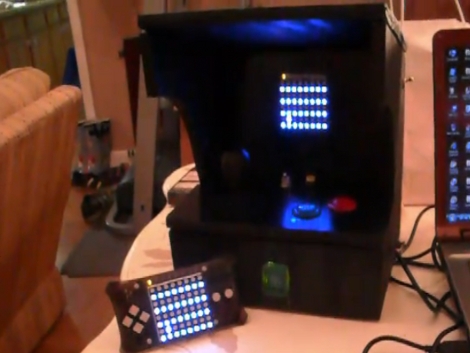
[Eric Feldman] likes to use the Stairmaster in his exercise routine during the winter months. But apparently the exercisers that are designed for mere mortals don’t satisfy his need to climb stairs really, really, quickly. After mastering the upper speed limits of some top-of-the-line equipment he contacted the company asking if there was a way to unlock the software-imposed speed restriction. They laughed at him; a motivation that he used to build his own that is already five times faster. He calls it the Stairmonster, and after being tested at over 500 stairs per minute that name is quite fitting. It’s got a nice interface for choosing an exercise program and recording data from his routines. It uses an AT89C51RD2 along with a quadrature decoder and a heart rate monitor module that talks to a chest strap worn during each session. A 320×240 touchscreen gives feedback on the routine, which is altered to achieve targeted heat rates for optimum results. Nice job [Eric]!
















